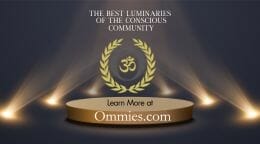Discover the distinctions between the Gypsy Deck and Tarot, from the number of cards to the complexity of symbols, and how interpretations vary based on study and intuition.
Tarot and the Gypsy Deck
Understand the Differences Between the Gypsy Deck and Tarot
With a few centuries of difference between their origins, the gypsy deck and tarot still divide many opinions, whether regarding interpretations, the accuracy of predictions, or the possibility of more elaborate and branched paths from the same card. Learn about the main differences between these two methods of cartomancy.
Structural and Interpretative Difference
The cartomancy world is enriched by its tools’ diversity and complexity, notably highlighted by the tarot and the gypsy deck. Each system brings its unique flavor to divination, shaped by historical development, symbolic richness, and interpretative depth.
The Tarot
With its 78 cards, the tarot deck is a repository of esoteric knowledge, split into the Major and Minor Arcana. The Major Arcana, consisting of 22 cards, delves into the profound themes of human experience, embodying archetypal figures and narratives that resonate across cultures and epochs. These cards, from The Fool to The World, chart the soul’s journey through life’s trials and triumphs. The Minor Arcana, on the other hand, captures the nuances of daily life through 56 cards, divided into four suits that correspond to the elements and aspects of human experience: Cups (emotions), Wands (creativity and action), Swords (conflict and intellect), and Pentacles (material aspects).
The complexity of tarot lies in the number of its cards and the layers of symbolism embedded within each image. Colors, numbers, and symbols are interwoven to create a multifaceted narrative that varies with the querent’s questions and the reader’s interpretative lens. This depth requires a thorough understanding of the symbolic language of tarot, demanding both study and intuition to unlock the myriad possibilities each reading presents.
Gypsy Deck: Intuitive and Accessible Wisdom
The gypsy deck, or petit Lenormand, offers a different approach to divination. With a history spanning about 210 years, it consists of fewer cards, yet it stands out for its directness and the accessibility of its imagery. The deck’s symbols draw heavily from everyday life and the collective unconscious, making it particularly resonant with those who seek guidance. The imagery of the gypsy deck—such as the loyal dog representing fidelity—is straightforward, allowing for intuitive readings that speak to the querent’s situation with clarity and immediacy.
Despite its apparent simplicity, the gypsy deck invites a deep engagement from the reader. The art of reading the gypsy deck hinges on the ability to connect with the cards’ images intuitively, blending the reader’s insights and experiences with the traditional meanings. This process allows for both personal and profound readings, revealing not just the future paths but also offering reflections on the querent’s current mindset and situation.
A Convergence of Study, Skill, and Intuition
The tarot and the gypsy deck demand a confluence of study, skill, intuition, and an in-depth engagement with their respective symbolisms for accurate and meaningful interpretations. The complexity of tarot necessitates a foundational understanding of its esoteric elements, inviting readers to delve into a lifelong learning journey. Conversely, the gypsy deck, with its more straightforward symbols, encourages immediate engagement, making it an accessible tool for both novices and seasoned readers alike.
However, the true depth of both systems emerges from the reader’s ability to bridge the gap between knowledge and intuition. The more a reader interacts with the cards, the more nuanced and layered their interpretations become, whether they are drawing from the rich tapestry of tarot or the direct imagery of the gypsy deck. Ultimately, both decks mirror the human psyche, reflecting back the complexities, challenges, and potentials that reside within and ahead of us.
The Rise of Tarot
Little widespread and applied due to the false illusion that its simple interpretation would bring flaws, the gypsy deck, also due to its young age, is sometimes overshadowed by tarot.
The cards had the same simplicity as the gypsy deck. Originating between the 14th and 15th centuries, it represents the elements present in the daily life of the nobility in order to make the interpretation simpler and more intuitive. However, it was introduced into the occultist universe between the 18th and 19th centuries with a new interpretation, explaining its meanings and interpretations in an occultist and psychological way. The reformulation of the symbology associated tarot with lines such as numerology, astrology, and also the Kabbalah, introducing new ways to interpret it and attributing increasingly dense answers to its images.
Accuracy and Scope
Even though tarot gains the aspect of subjectivity and numerous philosophical and psychological interpretations at the same time as the gypsy deck has the attribution of simplicity and objectivity, as well as less branched interpretations, both present the same level of efficacy and scope for questions, both deeper and mundane and superficial.
Besides the characteristics prejudged by those who know them from the outside, the differences between their iconographies, methodologies, and structure exist. Still, such specifics do not invalidate the accuracy of their predictions, especially if we take into account the levels of study, intuition, and skills developed and achieved by the Tarot reader or cartomancer.
Advantages of the Gypsy Deck Consultation
• Simple reading
• Easily interpreted images.
• Intuitive messages
• Consultations in the comfort of your home.
Tips for Using in a Gypsy Deck Reading
• Write your questions on paper so you don’t forget any.
• Take note of all the advice because it will help you make choices and gain knowledge about yourself.
• The consultation lasts as long as necessary. Do not rush and ask everything you need to know.
Ritual for Playing the Gypsy Card Deck
There are various rituals recommended for reading the cards; this is just one suggestion:
Sit in a quiet and comfortable place in a way that makes you feel very calm. This chosen place will serve as your refuge to exercise your divination ability.
Cleanse your spirit and mind of negative energies by praying to Santa Sara Kali, the Patron Saint of Gypsies. Wash your hands well, drink some water, and place a white cloth on the table where you will do the gypsy deck reading.
Click HERE to Connect with your Daily Horoscope on OMTimes!
Visit Our Astrology Store for Personalized Reports
About the Author
Creatrix from Sirius. Fairly Odd Mother of Saints (Bernards). Fish Tank aficionado by day, ninja by night. Liane is also the Editor-in-Chief of OMTimes Magazine and Ministry Earth Magazine, Co-Founder of Humanity Healing International and Humanity Healing Network, and Board Member of Saint Lazarus Relief Fund.
OMTimes is the premier Spiritually Conscious Magazine. Follow Us On Facebook, Twitter, Instagram, Linkedin, Pinterest, and Youtube
Creatrix from Sirius. Fairly Odd Mother of Saints (Bernards). Fish Tank aficionado by day ninja by night. Liane is also the Editor-in-Chief of OMTimes Magazine, Co-Founder of Humanity Healing International and Humanity Healing Network, and a Board Member of Saint Lazarus Relief Fund.










